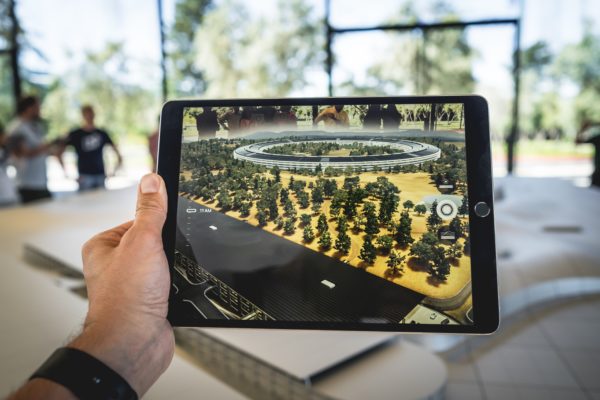Deakin researchers, in collaboration with technology company Calix, are making swift progress towards producing cheaper, more efficient, environmentally-sound batteries right here in Australia.
In collaboration with Calix – a multi-award-winning technology development company – researchers at Deakin University are on the way to firing-up Australian battery production.
The team has achieved a breakthrough in producing high-performance battery electrode materials, which has been one of the missing links for Australian battery production.
By improving the performance of abundant and affordable minerals, initially lithium and manganese, the researchers hope to significantly reduce the current cost of battery electrode production – one of the costliest parts of the battery.
Creating a cheaper, more environmentally friendly battery
Batteries can be expensive to produce and typically contain volatile and toxic components.
Thanks to the Deakin team, the prospect of producing a next-generation battery in Australia from Australian-sourced, safer materials at a much lower cost is highly likely.
Batteries contain three parts – a cathode, an anode and an electrolyte. This research seeks to improve the properties and production of the cathode and electrolyte components.
It hopes to achieve a safer, more powerful, easier-to-recharge, cheaper and more environmentally friendly battery.
Until now, most of Australia’s minerals used in battery production have been exported as raw materials, with the high-value-added benefits lost to the economy.
Calix is applying its breakthrough technology to develop a process for manufacturing high performance electrode materials in Australia and therefore removing the need to export the large quantities of minerals used in the manufacture battery components.
Known as ‘Flash Calcining,’ their process rapidly makes high surface area, porous materials that look like mineral honeycomb and have special qualities.
The researchers at Deakin’s battery research facility, BatTRI-Hub, have demonstrated to Calix that their in-house lithium manganese oxide (LMO) materials can perform at very high rates.
In a joint research project, they showed that the Calix production process improves these materials, achieving battery cathodes with outstanding capability for holding charge and recharging.
In fact, the Calix material performs equal to or better than commercial LMOs an d the Calix manufacturing process is faster and cheaper than traditional technologies.
To date, this three-year, $9.4 million project has been funded by the Federal Government’s Cooperative Research Centre projects (CRC-P) program.
The electrolyte development arm of this project will further help to make Calix materials a stand-out for next-generation batteries such as lithium metal battery cells and high voltage battery cells.
Specialty chemical and polymer manufacturer Boron Molecular is drawing on its chemical synthesis and large-scale production expertise to develop improved electrolytes for the new batteries.
Their work draws on Deakin’s world-leading expertise in ionic liquid electrolytes, which have an outstanding ability to withstand high temperatures of operation, as well as being non-volatile and less toxic than traditional electrolytes.
A faster transition to cleaner energy
These new-generation batteries will make electric-powered vehicles more accessible all over the world and speed up the transition to clean energy.
Focussing on minerals that are more abundant, accessible and affordable, these batteries will have several environmental benefits.
As well as protecting precious resources, they will aid the transition to electric vehicles and reduce CO2 emissions by hastening the replacement of petrol and diesel-powered vehicles.
Fossil-fuel powered scooters are a dominant source of pollution in many cities, contributing to health-related effects from poor air quality, greenhouse gas emissions and Climate Change.
The immediate end goal is a cheap LMO-based battery that works well at the smaller scale, initially for use in electric scooters – a huge market in Asia – as well as small cars and power tools, amongst other applications.
The potential international markets are enormous. And the research is progressing at speed; Calix’s unique $2.7m electrically powered BatMn
reactor at Bacchus Marsh, the first of its kind in Australia, was launched in 2019 to produce battery electrode materials.
The reactor is a key provider of novel materials for the storEnergy consortium, an Industrial Transformation Training Centre for Future Energy Storage Technologies led by Professor Maria Forsyth.
“BatTRI-Hub’s cutting-edge prototyping facility is being used to produce pouch cell batteries, optimise their performance and provide batteries for trials with global customers,” says Professor Forsyth.
“We are thrilled to be working with Calix and Boron Molecular to utilise the materials manufactured in regional Victoria as the next step towards developing next-generation batteries in Australia.”
Despite having a shorter range and requiring more frequent charging, these new batteries will have a very fast charging time of about 15 minutes, compared to the 6-12 hours of batteries in current electric vehicles.
Commercial future
Once this research has proved successful, the next step will be to develop other electrode materials, such as NMC cathodes, and patent the processes.
Calix Ltd and BatTRI-Hub are in discussions with potential manufacturers in Victoria, with battery production expected to begin in Australia within five years, underpinned by the Deakin research.
The project leaders have engaged UK-based battery manufacturer AMTE Power to make a 3kWh scooter pack using Calix LMO cathode powders, fine-tuned by the Deakin team.
Drawing on AMTE’s expertise in cell manufacturing, this battery pack will demonstrate that the Calix process works.
Development work on the Calix materials will continue over the coming 12 months, with the scooter pack expected to be completed by December 2021.
Professor Patrick Howlett is the Director of Deakin’s BatTRI-Hub.
Maria Forsyth is an Alfred Deakin Professor at the Institute for Frontier Materials, and Director of storEnergy. Check out this profile to learn more about her research.





